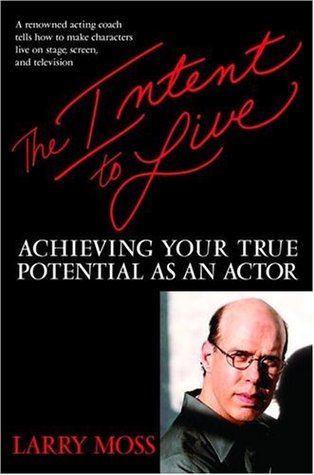More on this book
Kindle Notes & Highlights
by
Larry Moss
Read between
January 4 - May 30, 2019
television series Inside the Actors Studio,
Out of Africa,
These create conflict and raise the scene to heightened reality. This is what Alfred Hitchcock called “life
with all the boring bits cut out.”
Tennessee Williams’s play A Streetcar Named Desire,
One way to discover your
emotional justification is to ask yourself, “What if I don’t get my dream?” and imagine what would become of your life
if you d...
This highlight has been truncated due to consecutive passage length restrictions.
Cat on a Hot Tin Roof.
Arthur Miller’s play A View from the Bridge,
Whenever you get confused about what you’re doing
in a part—whether you’re working on it at home, auditioning, rehearsing, or in performance—say to yourself, “Wait
a minute, what’s driving me? Oh, right! My dream, m...
This highlight has been truncated due to consecutive passage length restrictions.
Now what is happening in this scene, or with this relationship that I’m involved in, and how is it co...
This highlight has been truncated due to consecutive passage length restrictions.
intentions or active intentions.
Objective, obstacle, and intention are the triad of all acting. They are in every scene you will ever play.
Who’s Afraid of Virginia Woolf?
Active intentions are aimed to get
reactions from the other characters in the scene.
Stella Adler said, “It’s not
the lines, it’s the life.” The life has to do with what you want (your objective), why you want it (your emotional justification), and how you go about getting it (your intention) to overcome the obstacles.
Some actors, directors, and
teachers don’t like the term or the idea of intention.
They fear that if you pick an intention to overco...
This highlight has been truncated due to consecutive passage length restrictions.
director and teacher Bobby Lewis
Uta Hagen said it brilliantly in a class: “Don’t show me your point of view. Have one.”
You will be grateful when a director talks to you in
terms of intention instead of results, when they tell you to pick a fight with the character, to annoy them, to romance them,
or to soothe them. These directions are much more actable than “Be angry,” “Be sour,” “Be ...
This highlight has been truncated due to consecutive passage length restrictions.
have to pick an intention because of its emotional heat; that’s what makes...
This highlight has been truncated due to consecutive passage length restrictions.
Remember: an intention is never an end in itself;
Who’s Afraid of Virginia Woolf?
Bernard Shaw. His play Mrs. Warren’s Profession
Scorsese’s mob picture Goodfellas
Cat on a Hot Tin Roof,
Good as It Gets,
The Seagull.
Boys Don’t Cry,
An intention is always active.
Cat on a Hot Tin Roof
Jules Feiffer’s
play Little Murders,
Misery is an emotional mood, and mood spelled backward is doom! You can’t and should never
try to act a mood.
you
prepare emotionally for despair and try to overcome it with active intentions.
you can’t play an emotional condition; you have an emotional condition, and because you have that
condition, you try to overcome it with active doings (intentions).
The Hours contains an extraordinary scene with a clear example
of playing an active intention over an emotional condition that the character doesn’t want anyone else to see.


